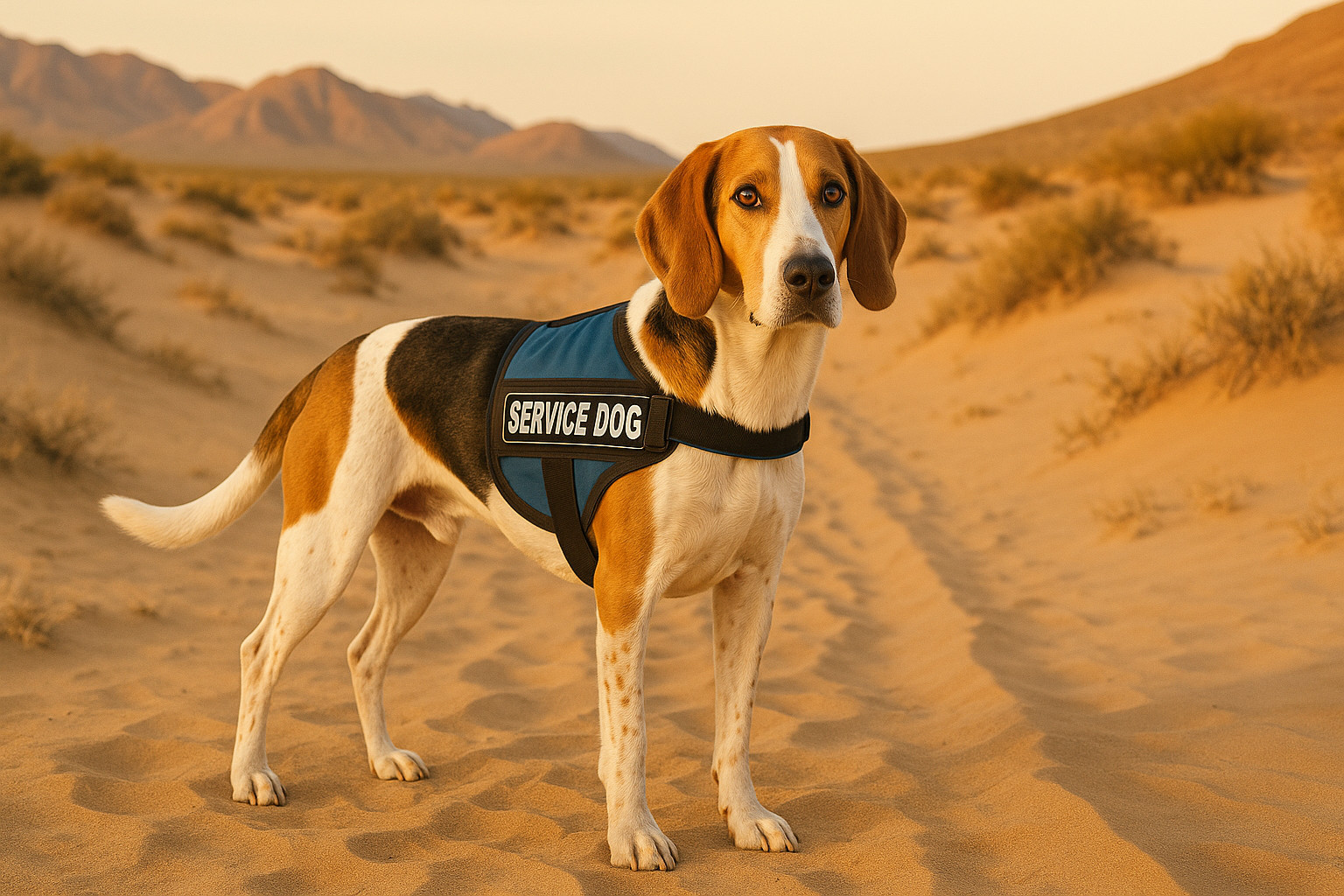Harrier as a Service Dog

The Harrier is a lesser-known but engaging breed, often overshadowed by more popular dogs like the Labrador Retriever or the German Shepherd. As an expert dog behaviorist and service dog trainer, it is imperative to assess the viability of the Harrier as a service dog. This article examines the Harrier’s suitability across various parameters including physical characteristics, temperament, types of service work, health considerations, and trainability. By the end of this article, you’ll have a comprehensive understanding of the Harrier’s potential as a service dog.
Harrier Overview
The Harrier is an energetic, medium-sized hound known for its powerful scenting abilities and stamina. Originally bred for hunting hare and fox in England, the Harrier is similar in appearance to the English Foxhound but smaller. Their prey-driven nature, robust energy levels, and amiable disposition contribute to their uniqueness as a breed. However, when considering the Harrier as a potential service dog, several aspects warrant thorough examination.
Physical Characteristics
The Harrier typically weighs between 45 to 60 pounds and stands about 19 to 21 inches tall at the shoulder. Their well-proportioned frame and musculature provide the physical prowess required for endurance tasks. This makes them physically capable of certain types of service work, such as pulling light wheelchairs or serving as a guide.
- Size and Build: Medium size facilitates maneuverability, useful in both indoor and outdoor environments.
- Endurance: Historically bred for endurance, which is an asset in tasks requiring long working hours.
- Scent Abilities: Their acute sense of smell allows them to be potential candidates for service roles requiring scent detection.
However, their medium size may be a limitation for certain tasks, such as pulling heavy wheelchairs or providing significant physical support.
Temperament and Attitude
Harriers are generally friendly, outgoing, and eager to please. However, there are specific temperament traits that can either enhance or hinder their capabilities as service dogs.
- Social Nature: Harriers thrive in a social environment, making them comfortable around people and other animals, which is essential for public access work.
- Prey Drive: While high prey drive could be a downside in environments requiring a calm demeanor, it can be channelized effectively into focused work with proper training.
- Loyalty and Affection: Their affectionate nature builds strong bonds with their handlers, critical for any service dog role.
Despite these positive attributes, their independent streak—a trait honed for following a scent trail independently during hunts—can sometimes translate into stubbornness. This may pose challenges in consistency during training exercises indoors or in urban settings.
Types of Service Work
The suitability of the Harrier for different types of service work varies across roles:
- Guide and Mobility Assistance: Their moderate size and strength may limit effectiveness in providing substantial mobility assistance, but they can be trained for guiding in lighter tasks.
- Medical Alert Service: With their acute scent detection abilities, Harriers could excel in roles such as alerting for seizures, diabetic emergencies, or allergens.
- Psychiatric and Emotional Support: Their sociable and affectionate nature makes them viable candidates for emotional support and psychiatric service roles, providing comfort and companionship.
- Search and Rescue: Leveraging their scenting abilities and stamina, Harriers could be trained for search and rescue operations.
While they are versatile, the specific working requirements should be carefully matched to the Harrier’s attributes.
Health Considerations
A breed’s health profile can greatly impact its service life. Harriers are generally healthy, but potential issues must be noted.
- Common Harrier Health Issues: Hip dysplasia, hypothyroidism, and ear infections are relatively common. Regular vet check-ups and a balanced diet are essential.
- Longevity: With a lifespan of 12-15 years, a Harrier could serve a significant service life, assuming good health.
Health conditions like hip dysplasia might limit strenuous physical roles. Regular health assessments are key to ensuring the dog can fulfill its role effectively.
Training and Suitability
Training a Harrier as a service dog requires understanding both their strengths and potential hurdles.
- Intelligence and Trainability: Harriers are smart but can be independent-minded, necessitating patient and consistent training methods.
- Adaptability: They are adaptable to different environments but thrive in structured routine settings to counteract their independent streak.
- **Socialization Ongoing socialization from a young age will help mitigate the impact of their hunting instincts in public settings.
Training a Harrier requires a firm but gentle approach, with reinforcement strategies tailored to their specific traits.
Summary of Harrier
In conclusion, the Harrier can make a competent service dog if its capabilities and limitations are appropriately matched with the service work needed. Here are the key strengths, weaknesses, and ideal service roles summarized:
- Strengths:
- Friendly and social, suitable for roles necessitating public interaction.
- Excellent scenting abilities for medical alert service.
- Robust endurance supports tasks requiring physical activity.
- Weaknesses:
- Moderate size may limit physical support tasks.
- Independent nature could affect training consistency.
- Potential health issues like hip dysplasia.
- Ideal Service Roles:
- Medical alert services such as detecting allergens or seizures.
- Emotional support and psychiatric services.
- Search and rescue operations leveraging scenting prowess.
In deciding whether a Harrier is the right choice as a service dog, one must weigh these factors and align them with the specific duties the dog is intended to perform. Proper assessment and training can help maximize their efficacy in providing invaluable assistance to those in need.











